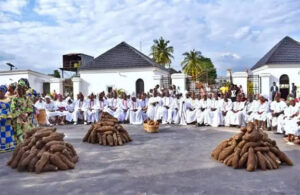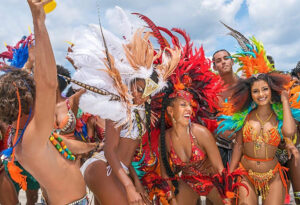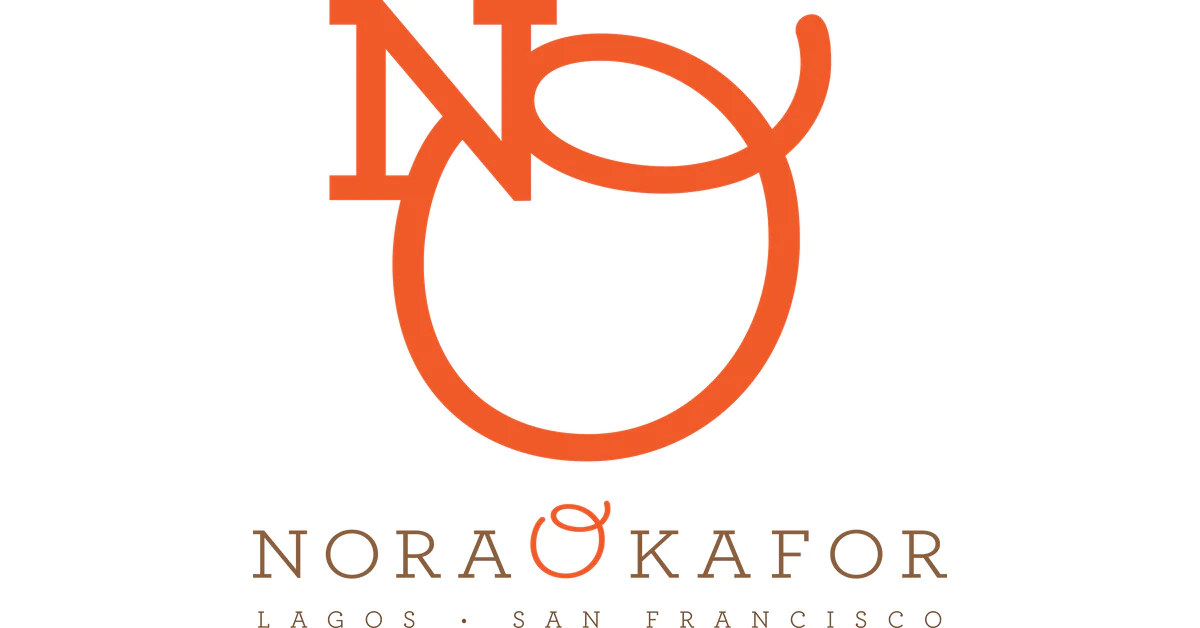One way to feel at home in a new environment is to learn about their celebrations and rituals. Holiday season here in America got me Googling “celebrations inspired by African traditions”. I’d love to share some tidbits I read about three prominent celebrations across the globe: Kwanzaa, New Yam Festival, and Crop Over. There’s a lot of information here! Check out what I found out about at least one of the celebrations to get a bit of insight into why/how they happen, and the communities that observe them. Celebrate life!
Kwanzaa: A beacon of African Heritage
This is an annual holiday when families and communities remember the past and celebrate African American culture. It is celebrated mainly in the United States from 26th December to 1st January.
Maulana Karenga, a professor of Africana studies at California State University, initiated Kwanzaa in 1966. The word Kwanzaa originates from the Swahili phrase, “Matunda ya kwanza” which connotes “first fruits” or “harvest festivals.”
Interestingly, Kwanzaa is based on seven principles drawn from communitarian values found throughout the African continent namely;
-
- Kujichagulia (Self-Determination)
-
- Umoja (Unity)
-
- Ujima (Collective Work and Responsibility)
-
- Ujamaa (Cooperative Economics)
-
- Nia, Kuumba (Purpose, Creativity)
-
- Imani (Faith)
Also, there are seven symbols for the holiday:
-
- Fruits, vegetables, and nuts
-
- A straw mat
-
- Kinara (a candleholder)
-
- Maize
-
- Gifts
-
- A communal cup signifying unity
-
- Seven candles in the African colors of red, green, and black (these candles represent the seven principles)
Additionally, Kwanzaa has come to be celebrated outside the United States, particularly in the Caribbean and other countries where there are large numbers of African descendants. The holiday grew in popularity during the Afrocentrist movement, which focused on Black self-sufficiency in the rejection of white imperialist narratives and histories. Unfortunately, the fame of the Kwanzaa has suffered in recent generations. Furthermore, Kwanzaa is a nonpolitical and nonreligious holiday. Even though the seven-pronged kinara resembles the eight-pronged Jewish menorah, Kwanzaa has no connection to Judaism. And because it is celebrated immediately after Christmas doesn’t make it related to or a substitute for Christmas.
Who observes Kwanzaa?
Black Americans are the major celebrants and celebrators of Kwanzaa. It may have waned in popularity but Kwanzaa is still annually celebrated by millions of Americans and by black people in Canada and the Caribbean.
How is Kwanzaa celebrated?
Each day of the celebration is attached to one of the seven principles mentioned earlier. On each day, each family lights one of the candles in the candleholder and discusses the principle for the day. Then on the 31st of December, all families dress mainly in clothing made from African textile designs. Tablescapes are designed with family keepsakes, African textiles and artifacts to host and join in a rich community feast, known as Karamu. This marks the culmination of Kwanzaa, bringing families and friends together in a vivid expression of brotherhood and cultural pride.
New Yam Festival: a period of gratitude and renewal

The New Yam Festival is an annual festival observed throughout West Africa. It is most popular among the Igbos (a tribe in Nigeria). Also, it is held at the end of the rainy season (anytime from early August to October). Depending on the people’s dialect, the New Yam Festival is often referred to as “Iwa ji,” “Iri ji,” “Ike ji,” “Orureshi,” or “Otute.”
This festival symbolizes the conclusion of a harvest and the beginning of the next work cycle. It is a cultural occasion that unites individual Igbo communities together as essentially agrarian.
Why is yam the core of the celebration?
Yam is seen as the king of crops among the Igbos. It is among the first set of crops to be planted at the beginning of the planting season. Other crops like maize, cocoyam, and pumpkins are harvested and eaten between April and August without any parade. But when it comes to yam, there’s usually a turn of events and a call for celebration.
The New Yam Festival reflects the prominence of yam in the social-cultural life of the Igbo people. In some communities, all old yams (from the previous year’s harvest) must be eaten or disposed of on the eve of the New Yam Festival. Only dishes of yam are served at the feast and the festival shows an abundance of the produce.
Who observes the New Yam Festival?
The New Yam Festival is an important event in the calendar of Igbo people all over the world. It is an enjoyable period after the cultivation season full of joy, thanks, and community display. Also, it is an opportunity for the members of the community to dress in their most colorful attires and accessories.
How is the New Yam Festival celebrated?
The style and methods of celebrating the New Yam Festival differ from one community to the next, but the essential components are the same. The celebration may last a whole day, a week, or more.
Major activities of the festival include the performance of rites by the Igwe (King), or the eldest man in the community, cultural dances by the men, women, and children, Igbo contemporary shows, masquerade dances, and fashion parades.
To begin the festival, the yams are offered to the gods and ancestors before distributing them to the villagers. This ritual can be performed by the oldest man in the community or by the king or eminent titleholder, depending on the community. It is done to express gratitude to the supreme deity for his protection and kindness in leading them from lean periods to the time of bountiful harvest.
Usually, the yam is roasted and served with palm oil. After the ritual, he has the first taste of the yam because his position makes him an intermediary between the community and the gods of the land. The rest of the activities for the day follow suit with a lot of eating and merry. And villagers share the plenty with friends and well-wishers.
Crop Over: Uniquely Barbadian

Like the New Yam Festival, Crop Over is a traditional harvest festival in Barbados. The purpose of Crop Over is to celebrate the end of the crop season. And it is the liveliest and important festival in Barbados.
The origin of Crop Over can be traced to the sugar cane plantations during slavery. It was first established in 1687 which makes it one of the oldest festivals in the Western Hemisphere.
Interestingly, the festival was disbanded in the 1940s following a decline in the sugar industry. But in 1974, the Barbados Tourism Authority rekindled the flame of Crop Over to attract tourists.
Later in 1983, the festival was taken over by the National Cultural Foundation. All features of the festival were improved to provide enthusiasts and first-timers with the best experience every year.
Who observes Crop Over?
Crop Over is observed by the people of Barbados as a celebration of their rich culture and harvest. Barbados is an island country in the Lesser Antilles of the West Indies, in the Caribbean region of the Americas.
The Crop Over calendar is packed with various events ranging from visual arts and craft exhibitions, calypso tents and competitions, and countless fetes and j’ouverts.
How is Crop Over celebrated?
The Crop Over Festival usually lasts for 2 months. It begins with a huge party called ‘King Bubba Illuminate’ on June 1st and ends on 1st August with the Grand Kadooment Carnival. There are a plethora of events in between to engage people, from cultural activities to competitions to concerts.
Major Crop Over activities
-
- Also, the Bridgetown Market is pumped with a party hubbub, selling food and drink, local arts/crafts, and festival souvenirs.
-
- The festival starts with the Opening Gala and Ceremonial Delivery of the Canes, and the crowning of the king and queen of cane cutters.
-
- Again, there is the colorful Cohobblepot, a carnival show featuring members of the Kadooment bands showcasing their bright costumes, accompanied by plenty of music and dance.
-
- Another exciting activity is the Kiddies Kadooment competition, which involves the younger folks donning colorful costumes before a panel of judges.
-
- Next, we have folk concerts and photographic exhibitions that highlight the island’s rich cultural heritage and display the creative talents of the Bajans.
-
- Additionally, different groups dance for prizes and titles such as Party Monarch and Pic-O-De-Crop Monarch at the Calypso tents.
-
- The National Cultural Foundation also holds official events like lectures and other educational displays.
-
- Lastly, the festival’s grand finale is the Grand Kadooment carnival parade which features lively bands, exotic dancers, street performers, and elaborate costumes competing for the Designer of the Year prize.
The world-famous Kensington Oval houses many of the festival’s events. Starting from the stadium, participants can easily head down to the Spring Garden Highway for the ForeDay Morning Jam, where mud, paint and oil are plastered on party goers as they sing, dance, and celebrate.
Conclusion
The fabric of African festivities is woven with threads of resilience, spirituality, and collective identity. Kwanzaa, the New Yam Festival, and Crop Over are but three threads in this vibrant cultural cloth, each with their resonance and reflection of the African spirit. These celebrations showcase not just joy and faith but resonate with the core human desire for community and belonging, passing a rich heritage from generation to generation.
In the diasporic echoes and on African soil, these festivities are a testament to the enduring strength and diversity of African culture. They compel us to look beyond the individual, to celebrate together, and to honor the timeless traditions that define and elevate our shared humanity, regardless of borders or backgrounds.
Celebrating Africa’s cultural legacy reminds us all of the beauty of unity in diversity and the deep roots from which we all grow.
Sources include: Barbados.org, Wikipedia, Visit Barbados, Sandals Blog, Savannah Barbados, National Cultural Foundation (NCF), Lonely Planet, Global Carnivalist
